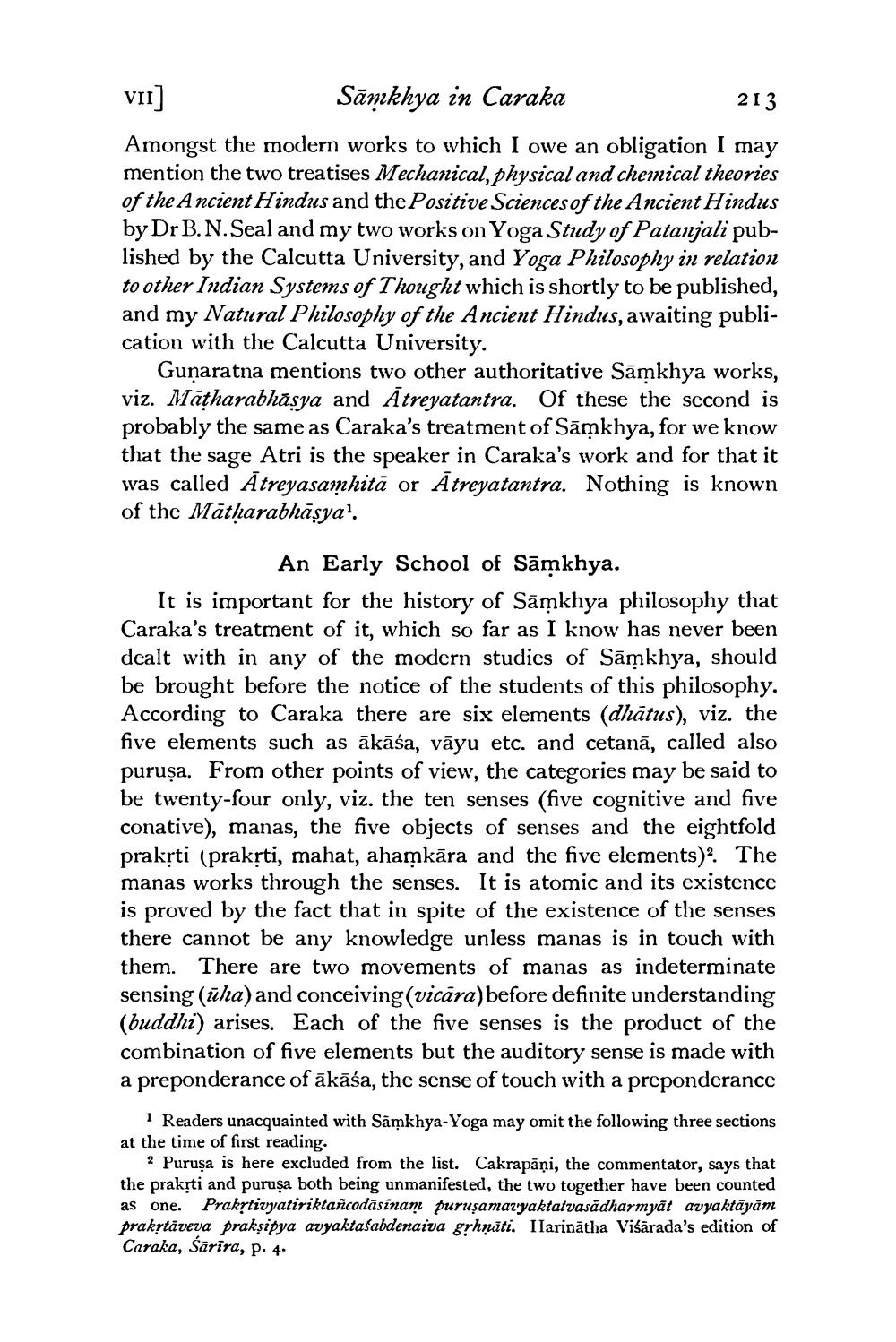________________
VII]
Samkhya in Caraka
213
Amongst the modern works to which I owe an obligation I may mention the two treatises Mechanical, physical and chemical theories of the Ancient Hindus and the Positive Sciences of the Ancient Hindus by Dr B. N. Seal and my two works on Yoga Study of Patanjali published by the Calcutta University, and Yoga Philosophy in relation to other Indian Systems of Thought which is shortly to be published, and my Natural Philosophy of the Ancient Hindus, awaiting publication with the Calcutta University.
Gunaratna mentions two other authoritative Samkhya works, viz. Maṭharabhāṣya and Ātreyatantra. Of these the second is probably the same as Caraka's treatment of Samkhya, for we know that the sage Atri is the speaker in Caraka's work and for that it was called Atreyasamhita or Ātreyatantra. Nothing is known of the Matharabhāṣya1.
An Early School of Samkhya.
It is important for the history of Samkhya philosophy that Caraka's treatment of it, which so far as I know has never been dealt with in any of the modern studies of Samkhya, should be brought before the notice of the students of this philosophy. According to Caraka there are six elements (dhātus), viz. the five elements such as ākāśa, vāyu etc. and cetană, called also purusa. From other points of view, the categories may be said to be twenty-four only, viz. the ten senses (five cognitive and five conative), manas, the five objects of senses and the eightfold prakṛti (prakṛti, mahat, ahaṛkāra and the five elements)2. The manas works through the senses. It is atomic and its existence is proved by the fact that in spite of the existence of the senses there cannot be any knowledge unless manas is in touch with them. There are two movements of manas as indeterminate sensing (uha) and conceiving (vicāra) before definite understanding (buddhi) arises. Each of the five senses is the product of the combination of five elements but the auditory sense is made with a preponderance of ākāśa, the sense of touch with a preponderance
1 Readers unacquainted with Samkhya-Yoga may omit the following three sections at the time of first reading.
2 Purusa is here excluded from the list. Cakrapāņi, the commentator, says that the prakṛti and puruşa both being unmanifested, the two together have been counted Prakṛtivyatiriktañcodāsīnam puruşamavyaktatvasadharmyat avyaktāyām prakṛtāveva prakṣipya avyaktaŝabdenaiva gṛhṇāti. Harinatha Viśārada's edition of Caraka, Sarira, p. 4.
as one.




